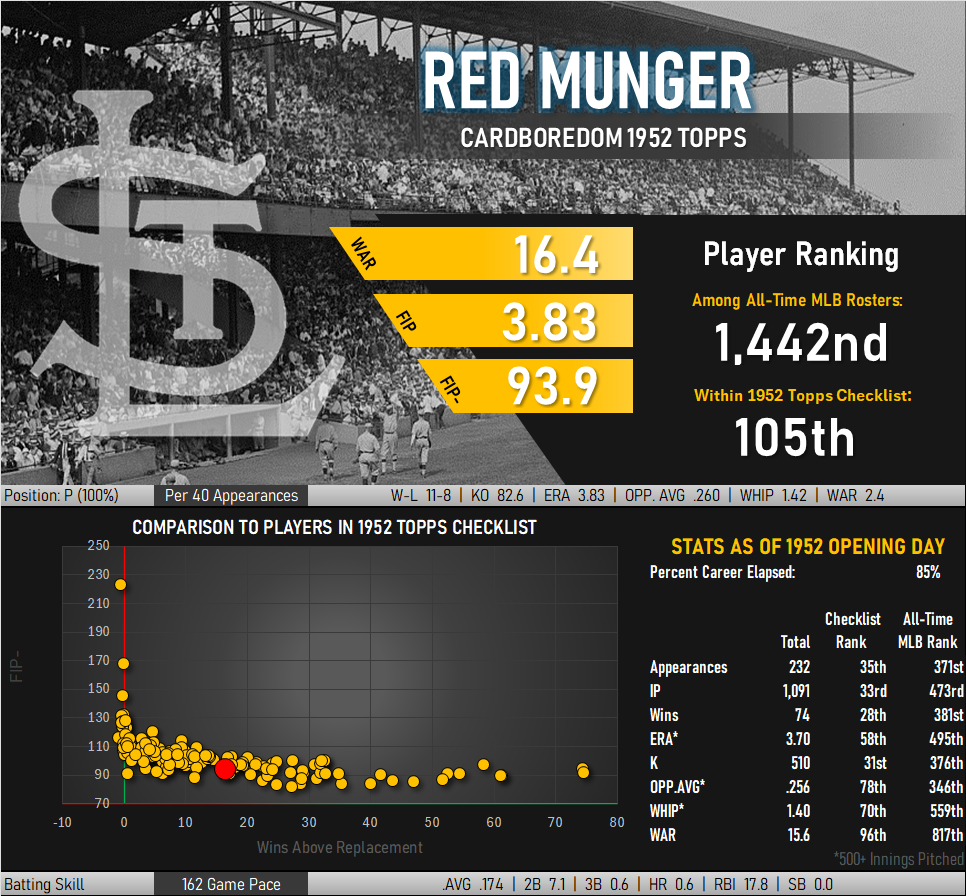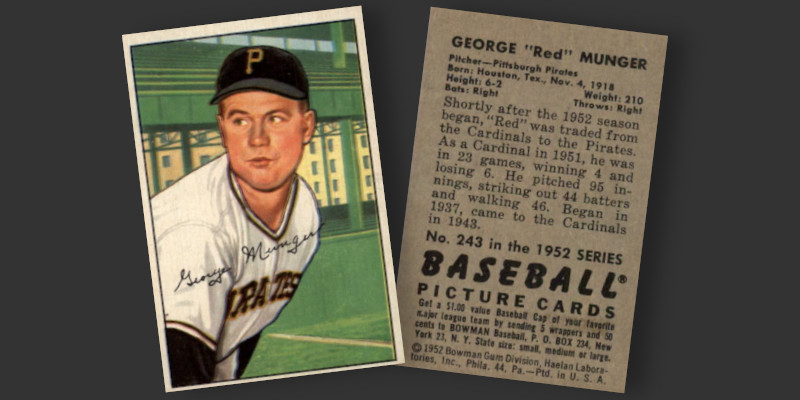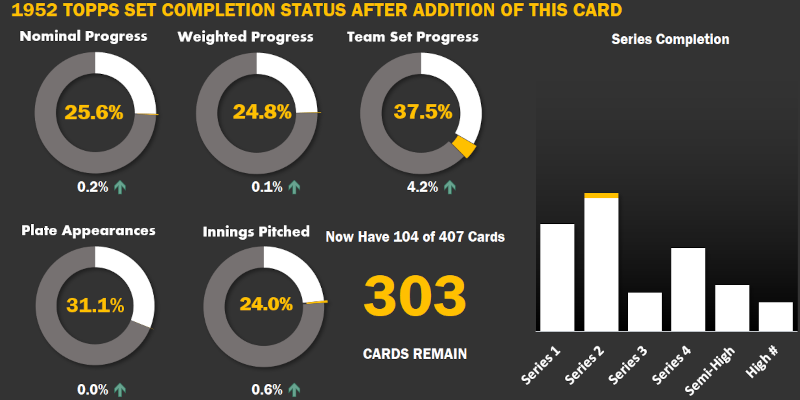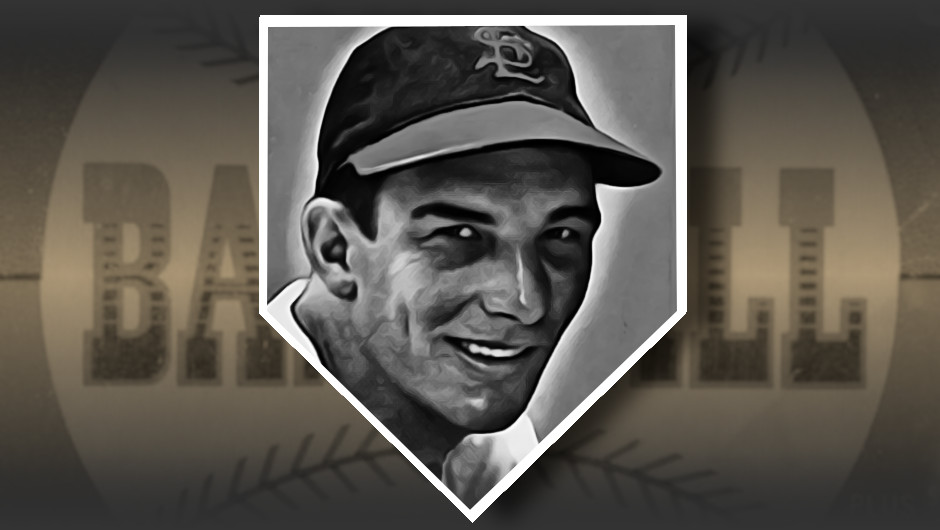In his 1952 Topps photo, Red Munger appears to be taking mental stock of the photographer. A Texan with a penchant for chewing tobacco, he would use his 6’2″ frame and powers of mental assessment in his post baseball work as a Pinkerton operative. I haven’t found much about what exactly he did for the detective agency, but his Texas background is enough for my imagination to give him exploits reminiscent of Charlie Siringo.

Munger was a capable middle of the order pitcher for much of the 1940s, coupling with staff ace Harry Brecheen to win the 1946 World Series. He was pulled away from baseball for WW2 in the middle of his best season. Military life revolved around overseeing a prison and absolutely dominating the local baseball league. He put up an Orel Hershiser-like performance of scoreless innings and routinely fanned double digit totals when he took the mound. This success didn’t transition back to civilian life and his numbers declined at the end of the decade. Munger is shown near the end of his days with the Cardinals. By this time he was playing so much winter ball in Cuba and Mexico that one could almost say he was a Spanish league player that happened to pitch in a few Cardinals games.

A Difference in 1952 Munger Cards
Although he was at the end of his career, both Topps and Bowman thought it fitting to include Munger in their 1952 checklists. Topps issued the above card in its relatively early second series while Bowman published its card of the pitcher in its late-season high number series. Red is shown as a member of the Pittsburgh Pirates, a team for which he would play 26 innings during the season. The text on the card back talks about the mid-season trade that brought him to Pittsburgh. His uniform even looks new in the painting.










